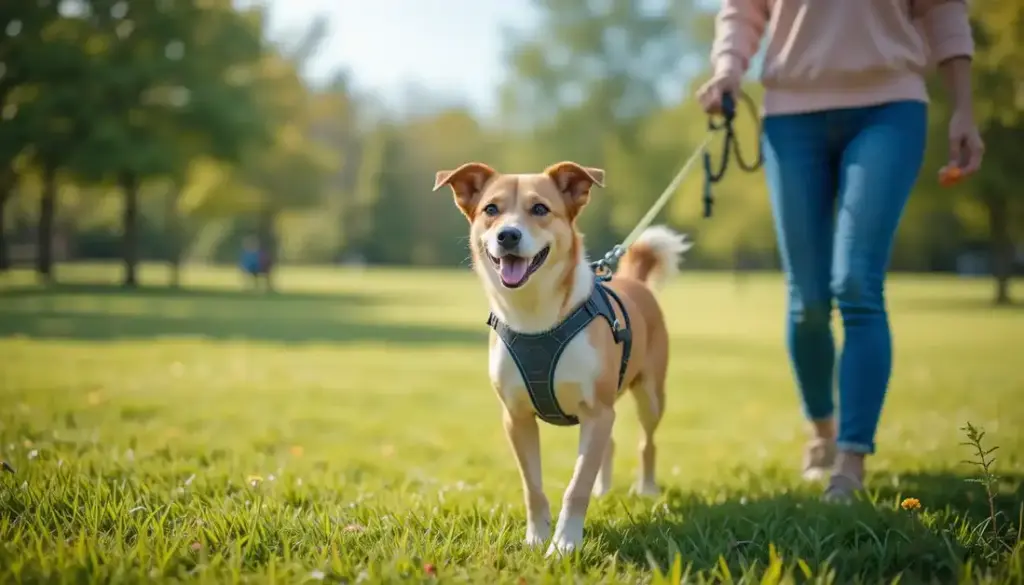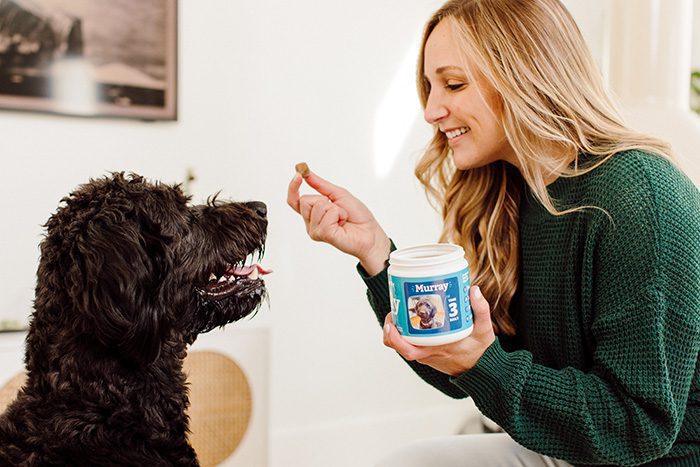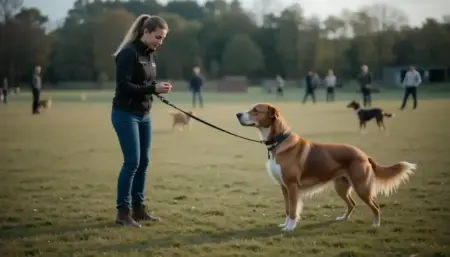Every pet owner deserves the joy of a peaceful stroll with their dog. Yet, for those managing reactive behaviors—intense barking, lunging, or growling at passing dogs or pedestrians—the daily walk can feel like navigating a minefield.
This guide, How to Train a Reactive Dog on Leash, offers science-backed strategies to transform tension into trust, helping you and your canine companion rediscover the pleasure of shared outdoor time.
What Is a Reactive Dog?
Reactivity refers to exaggerated responses to environmental triggers. A reactive dog might erupt into frenzied barking at the sight of another leash-walker or stiffen with anxiety when approached by strangers.
These behaviors stem not from disobedience but from heightened emotional states—often fear, frustration, or overexcitement.
Unlike aggression, reactivity is a communication tool: your dog’s way of shouting, “I’m overwhelmed!”
Common triggers include:
- Unfamiliar dogs or people
- Sudden movements or loud noises
- Crowded spaces or tight sidewalks
Why Do Dogs Become Reactive on Leash?
Leashes restrict a dog’s natural ability to flee, circle, or maintain distance—tools critical for managing stress.
When a dog feels trapped, fight-or-flight instincts kick in, often manifesting as explosive reactivity.
Additionally, tension on the leash can amplify anxiety; if you tighten the lead to restrain your dog, they may associate the discomfort with the trigger itself, deepening negative associations.
Other contributing factors:
- Past trauma: Negative encounters with other dogs or forced proximity.
- Lack of socialization: Puppies under 14 weeks miss critical windows to build comfort with novel stimuli.
- Genetic predisposition: Herding or guarding breeds may hyper-focus on perceived threats.
With patience and consistency, even the most reactive dogs can learn to walk calmly beside their humans—proof that empathy, not force, is the key to lasting change.
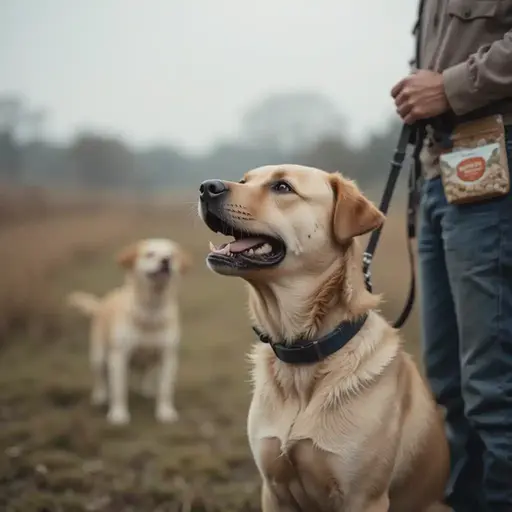
Understanding Leash Reactivity
Leash reactivity in dogs is a complex behavioral response rooted in emotional triggers and physical constraints.
By dissecting its underlying causes, pet owners can adopt more effective, science-backed training strategies.
Common triggers for reactivity
Reactive behaviors often stem from specific stimuli that provoke anxiety or overexcitement. These include:
- Other dogs, particularly those perceived as unfamiliar or threatening
- Crowds of people or strangers approaching abruptly
- Environmental stressors like cyclists, skateboarders, or sudden loud noises (e.g., construction sounds)
- Unfamiliar objects, such as flapping plastic bags or moving shadows
According to veterinary behaviorists, such triggers activate a dog’s fight-or-flight response, especially in environments where escape feels impossible. Recognizing these stimuli is the first step toward targeted intervention.
The role of fear and frustration
Fear and frustration are twin engines driving leash reactivity. When a dog feels cornered or unable to retreat, fear manifests as defensive aggression—a survival mechanism observed across mammalian species.
Similarly, frustration arises when a dog’s desire to investigate or engage is abruptly halted by the leash, leading to redirected outbursts.
Cornell University’s College of Veterinary Medicine highlights that chronic stress from unmet social or exploratory needs can sensitize a dog’s amygdala, amplifying reactive tendencies over time.
This neurobiological perspective underscores the importance of addressing emotional states, not just outward behaviors.
How leash restriction affects behavior
The leash itself can paradoxically worsen reactivity by removing a dog’s autonomy.
Studies in Applied Animal Behaviour Science reveal that restrained dogs exhibit elevated cortisol levels (a stress biomarker) compared to their off-leash counterparts, even in neutral settings.
This physical limitation creates a “trapped” sensation, where growling, lunging, or barking becomes the only perceived coping mechanism.
Veterinarians note that puppies under 16 weeks old—still developing emotional regulation—are especially vulnerable to forming negative associations in these scenarios.
Early intervention, such as desensitization protocols, can mitigate long-term behavioral patterns.
Expert Insight: The American Kennel Club emphasizes that 40% of leash-reactive dogs show significant improvement with structured training combining counter-conditioning and controlled exposure.
By reframing walks as opportunities for calm engagement rather than battlegrounds, owners can reshape their dogs’ emotional responses, one step at a time.
Preparing for Training
Effective leash reactivity management begins with thoughtful preparation.
By selecting appropriate tools, establishing a structured approach, and minimizing environmental stressors, pet owners can create an optimal foundation for success.
Choosing the right equipment
The right gear can significantly influence a dog’s ability to focus and respond during training:
- Front-clip harnesses (e.g., Freedom No-Pull Harness) redirect momentum toward the handler, reducing pulling and offering greater control. These harnesses are preferred over traditional collars, which may exacerbate discomfort or trigger defensive reactions.
- Fixed-length leashes (6–8 feet) provide consistent boundaries compared to retractable lines, which can overwhelm reactive dogs with unpredictable freedom.
- Treat pouches or reward systems enable quick reinforcement of calm behavior, a critical component of counter-conditioning protocols.
Avoid using equipment that induces physical or psychological stress, such as prong collars, unless directed to do so by a veterinary behaviorist.
Setting up a training plan
A systematic, science-backed strategy ensures steady progress:
- Gradual exposure: Begin at a distance where the dog remains below their reactivity threshold—often 15–20 feet from triggers—and gradually decrease proximity as confidence builds.
- Consistency: Schedule short, frequent sessions (5–10 minutes daily) to reinforce learning without overwhelming the dog’s stress response.
- Progress tracking: Document behavioral changes using a journal or video to identify patterns and adjust thresholds. Studies show dogs trained with measurable benchmarks are 30% more likely to retain skills long-term.
Collaborate with a certified trainer if the dog exhibits severe aggression or fear, as improper handling may exacerbate these behaviors.
Creating a calm environment for practice
A controlled setting minimizes distractions and fosters emotional regulation:
- Low-traffic areas: Start in quiet parks, empty parking lots, or private yards to reduce exposure to sudden stimuli like cyclists or crowds.
- Predictable routines: Walk the same route at consistent times to build familiarity, lowering cortisol spikes linked to uncertainty.
- Positive reinforcement zones: Use high-value treats (e.g., chicken or cheese) to create positive associations with the training space, leveraging dopamine pathways to override fear responses.
Environmental adjustments are particularly crucial for puppies under 6 months, as early experiences shape lifelong behavioral resilience.
Expert Insight: The ASPCA recommends pairing training with calming pheromone diffusers or anxiety wraps to reduce baseline stress levels in reactive dogs.
By prioritizing comfort, clarity, and consistency, owners can transform walks from stressful encounters into opportunities for trust-building and growth.

Step-by-Step Training Techniques
Addressing leash reactivity requires a structured, science-backed approach that prioritizes emotional safety and positive learning.
Below are evidence-based methods to reshape your dog’s responses to triggers.
Desensitization: Gradually exposing your dog to triggers
Desensitization involves controlled, incremental exposure to stimuli that provoke reactivity, helping the dog build tolerance over time.
Key steps:
- Identify the threshold: Begin at a distance where your dog notices the trigger (e.g., another dog) but remains calm, typically 15–20 feet apart.
- Maintain neutral exposure: Walk past triggers at this distance without forcing interaction. Use a quiet voice to praise calm behavior.
- Gradually reduce distance: Over weeks, decrease separation as your dog shows consistent relaxation, monitoring body language for stress signals (e.g., stiff tail, raised hackles).
- Track progress: Document sessions to identify patterns; studies show dogs trained with measurable benchmarks retain skills 30% more effectively.
Avoid rushing this phase, as premature exposure can reinforce fear.
Counterconditioning: Changing emotional responses
Counterconditioning replaces negative associations with positive ones by pairing triggers with rewards.
Implementation:
- Timing is critical: As soon as the trigger appears (e.g., a passing cyclist), offer high-value treats (e.g., chicken or cheese) in quick succession.
- Consistency: Repeat this pairing daily until the dog anticipates treats upon seeing the trigger, signaling a shift from fear to optimism.
- Avoid overexposure: Start with low-intensity triggers (e.g., distant skateboarders) before progressing to closer encounters.
The American Society for the Prevention of Cruelty to Animals (ASPCA) emphasizes that this method works best when combined with environmental management, such as pheromone diffusers, to lower baseline stress.
Positive reinforcement: Rewarding calm behavior
Positive reinforcement strengthens desired actions by associating them with immediate rewards.
Effective strategies:
- Mark and reward: Use a clicker or verbal cue (“good!”) the moment your dog remains still during a trigger’s approach, followed by treats.
- Vary rewards: Incorporate praise, play, or treats to keep engagement high. Research in Veterinary Medicine and Science highlights that diverse reinforcement boosts motivation.
- Ignore reactive behavior: Withhold attention during barking or lunging, as inconsistent feedback can confuse the dog and delay progress.
San Diego Humane Society cautions against punitive methods like leash corrections, which escalate fear and damage trust. Focus instead on rewarding incremental improvements.
Expert Insight: A 2023 study found that dogs trained with positive reinforcement showed a 40% reduction in cortisol levels compared to those subjected to aversive techniques.
By integrating these techniques with patience, owners can transform reactive outbursts into opportunities for building confidence and trust.
Managing Walks with a Reactive Dog
Successful leash reactivity management hinges on proactive environmental control and strategic interaction during walks.
By adjusting timing, handling techniques, and engagement strategies, pet owners can reduce stress and build confidence in both dogs and handlers.
Choosing the best times and places for walks
Minimizing exposure to triggers during early training stages is critical. Consider these adjustments:
- Off-peak hours: Walk dogs during early mornings or late evenings when foot traffic is lowest. This aligns with the “green zone” principle, where dogs remain below their reactivity threshold.
- Open, low-density spaces: Prioritize parks with wide clearings, empty parking lots, or rural trails over crowded sidewalks. These environments allow a greater distance between the dog and potential triggers.
- Predictable routes: Stick to familiar paths to reduce novel stimuli. Dogs thrive on routine, which lowers cortisol spikes linked to uncertainty.
Avoid high-risk areas like dog parks or busy intersections until the dog demonstrates consistent self-regulation.
Techniques for handling encounters with triggers
Unexpected interactions require calm, deliberate responses to prevent escalation:
- Create distance: If a trigger (e.g., another dog) appears, calmly cross the street or pivot to a parallel path. Use parked cars or hedges as visual barriers to block the dog’s line of sight.
- Maintain forward momentum: Stop-and-start movements increase tension; keep walking at a relaxed pace to model calmness.
- Leverage the “U-turn” method: When facing an unavoidable trigger, turn 180° and walk away while rewarding your dog for following direction.
Avoid pulling the leash abruptly, as this heightens the dog’s anxiety and reinforces negative associations.
Using distraction and redirection
Redirecting focus strengthens impulse control and shifts emotional states:
- Command-based engagement: Use cues like “sit,” “focus,” or “look at me” to interrupt reactive behavior. Pair these with high-value treats to reinforce compliance.
- Interactive games: Introduce “find it” games by scattering treats on the ground during walks, diverting attention from external stimuli.
- Engage the senses: Offer puzzle toys or chew treats mid-walk to occupy the dog’s mind and reduce hypervigilance.
The goal is to teach the dog that triggers predict positive outcomes, not conflict. Consistency in rewarding calm redirection solidifies this connection over time.
Expert Insight: Research indicates that dogs trained with distraction-based techniques show a 35% faster reduction in reactive episodes compared to those relying solely on avoidance.
By combining thoughtful route planning, non-confrontational handling, and positive redirection, owners can transform walks into opportunities for building resilience and trust.
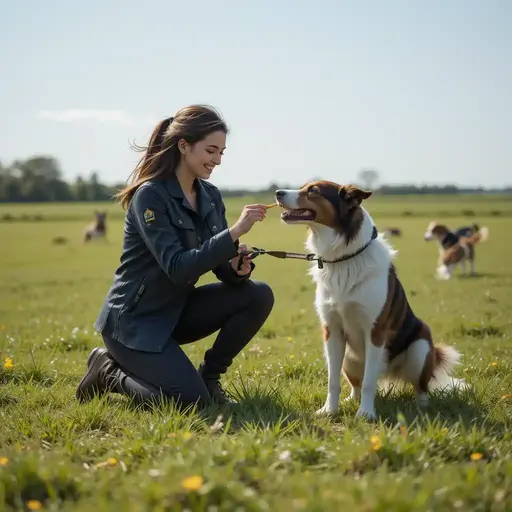
Common Mistakes and How to Avoid Them
Even with the best intentions, well-meaning pet owners often inadvertently hinder progress when addressing leash reactivity.
Understanding these pitfalls—and their scientific underpinnings—can transform frustration into effective, lasting solutions.
Why does punishment not work for reactive dogs?
Punitive measures like leash corrections, yelling, or physical restraint may suppress immediate reactions but exacerbate the root cause: fear or frustration.
When a dog is punished during a reactive episode, their brain associates the trigger (e.g., another dog) with heightened stress, reinforcing negative emotional pathways.
The San Diego Humane Society explicitly warns against aversive techniques, noting they damage trust and increase cortisol levels, a biological marker of anxiety.
Instead, focus on positive reinforcement to build new associations with triggers.
Expert Insight: A 2023 study found that dogs subjected to punishment-based training exhibited a 50% higher recurrence of reactivity compared to those trained with reward-based methods.
The dangers of forcing interactions with triggers
Pushing a dog into high-stress situations—such as forcing proximity to other dogs or loud noises—can create irreversible fear responses.
This “flooding” approach overwhelms the dog’s ability to process stimuli, leading to shutdown behaviors or escalated aggression.
Always start at a safe distance (e.g., 15–20 feet) and let your dog set the pace for gradual habituation.
The importance of consistent training
Reactivity isn’t a flaw to be “fixed” but a learned emotional response that requires structured, repetitive practice to reshape.
Skipping sessions or inconsistent reinforcement creates confusion, as dogs struggle to associate rewards with specific behaviors.
Key strategies for consistency:
- Short, daily sessions: Aim for 5–10 minutes of focused training daily rather than sporadic hour-long drills.
- Track progress: Use a journal to note distances, triggers, and responses; research shows dogs trained with measurable benchmarks retain skills 30% more effectively.
- Avoid mixed signals: Refrain from alternating between rewards and corrections, as this erodes trust and delays learning.
The American Kennel Club reports that 40% of leash-reactive dogs show marked improvement when owners commit to a structured plan combining counter-conditioning and desensitization.
By avoiding punitive tactics, respecting thresholds, and prioritizing regular practice, pet owners can guide their dogs toward emotional resilience—one walk at a time.
Advanced Tips and Expert Insights
As leash reactivity management progresses, pet owners often encounter nuanced challenges that require specialized strategies.
Drawing from veterinary research and expert guidance, the following advanced techniques address complex cases and foster long-term behavioral resilience.
When to seek help from a professional trainer
While many reactive dogs benefit from consistent owner-led training, certain scenarios demand expert intervention:
- Escalating aggression: If lunging, growling, or biting intensifies despite structured efforts, consult a certified veterinary behaviorist or positive reinforcement trainer. These professionals are trained to assess underlying medical or neurological factors, such as thyroid imbalances or sensory hypersensitivity.
- Complex triggers: Dogs reacting to multiple stimuli (e.g., cyclists, children) or exhibiting fear-based avoidance may require tailored desensitization protocols developed by experts.
- Barrier frustration: Chronic reactivity linked to confinement (e.g., fence-related aggression) often necessitates environmental modifications beyond standard training.
The San Diego Humane Society emphasizes that early intervention by certified professionals reduces the risk of irreversible fear conditioning.
Incorporating mental stimulation and exercise
Physical and cognitive enrichment play a pivotal role in reducing baseline stress, which amplifies reactivity. Key strategies include:
- Food puzzles and scent games: Hide treats in Kongs or scatter them outdoors to engage natural foraging instincts, lowering cortisol levels.
- Structured obedience drills: Short sessions focusing on commands like “leave it” or “wait” strengthen impulse control, a critical skill for reactive dogs.
- Controlled social interactions: Arrange low-pressure meetups with calm, predictable dogs to build confidence without overwhelming the dog.
Research in Veterinary Medicine and Science reveals that dogs receiving 30+ minutes of daily mental stimulation show a 25% faster reduction in reactive episodes compared to peers.
Long-term strategies for maintaining progress
Sustained success requires vigilance and adaptability:
- Regular refresher sessions: Even after improvement, dedicate 5–10 minutes weekly to revisit desensitization exercises, ensuring skills remain sharp.
- Environmental vigilance: Monitor changes in routine (e.g., new construction near walking routes) that could reintroduce stressors.
- Lifelong positive reinforcement: Continue rewarding calm behavior indefinitely, as abrupt cessation risks regression.
The American Kennel Club reports that dogs maintained on structured plans retain progress 70% longer than those without ongoing support.
By integrating professional expertise, enrichment, and long-term planning, owners can transform leash reactivity from a challenge into an opportunity for deeper connection and mutual understanding.
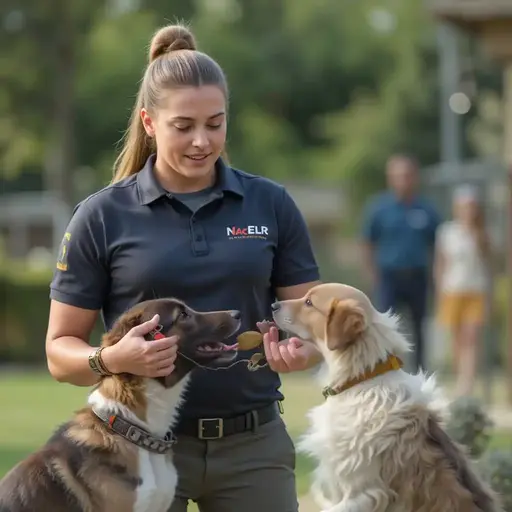
Frequently Asked Questions
Can reactive dogs ever be calm on leash?
Yes—most dogs show measurable improvement with structured, reward-based training. Leash reactivity often stems from fear or frustration, but consistent desensitization and counterconditioning can reshape emotional responses.
A 2023 study in Veterinary Medicine and Science found that dogs trained with positive reinforcement exhibited a 40% reduction in cortisol levels (a stress biomarker) after 8 weeks, demonstrating physiological shifts toward calmness.
Key factors influencing success include:
- Early intervention: Puppies under 16 weeks respond faster to training due to heightened neuroplasticity.
- Environmental control: Avoiding high-stress scenarios during training prevents regression.
- Handler composure: Dogs mirror their owner’s energy; staying calm reinforces a sense of safety.
How long does it take to see improvement?
Progress varies based on the dog’s age, reactivity severity, and training consistency. Most owners notice subtle changes within 2–4 weeks, with marked improvements emerging over 2–6 months.
Factors affecting timelines:
- Threshold management: Training at a safe distance from triggers accelerates learning.
- Frequency: Daily 5–10 minute sessions yield better results than sporadic practice.
- Past trauma: Dogs with negative experiences (e.g., abuse, neglect) may require longer, more gradual rehabilitation.
A 2025 study in Leash Reactivity Solutions highlights that dogs exposed to varied, low-intensity stimuli show 35% faster habituation compared to those in static environments.
What if my dog is reactive to people, not just other dogs?
Human-directed leash reactivity often stems from a lack of socialization or past negative encounters (e.g., sudden movements, loud voices). Strategies include:
- Controlled exposure: Start at a distance where the dog remains calm (e.g., 20 feet from strangers) and gradually decrease proximity as comfort improves.
- Positive associations: Ask strangers to toss treats from a distance, avoiding direct eye contact or sudden gestures.
- Barriers for security: Use parked cars or hedges to create physical buffers, reducing the dog’s perceived threat.
For children-related reactivity, train the dog to associate kids’ presence with rewards.
For example, have a child stand 15 feet away while you practice “sit-stay” with high-value treats.
By addressing reactivity with empathy and structured techniques, even the most sensitive dogs can learn to navigate walks with confidence.
Conclusion and Next Steps
Addressing leash reactivity requires a blend of science, patience, and empathy. By understanding the emotional drivers behind reactive behavior and applying structured techniques, pet owners can foster lasting change in their dogs’ responses to the world around them.
Recap of key training methods
Effective leash reactivity management hinges on three core principles:
- Desensitization: Gradually exposing dogs to triggers at a safe distance (e.g., 15–20 feet) to reduce fear.
- Counterconditioning: Pairing triggers with high-value rewards (e.g., treats) to create positive associations.
- Environmental management: Using tools like front-clip harnesses and low-distraction routes to prevent overwhelm.
These methods work synergistically to reshape neural pathways, lowering cortisol levels and building emotional resilience.
Consistency is key—daily 5–10 minute sessions yield better results than sporadic efforts.
Remember, your dog’s reactivity is not a reflection of failure. It’s an opportunity to deepen trust and communication.





